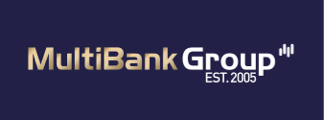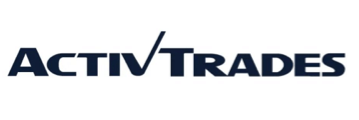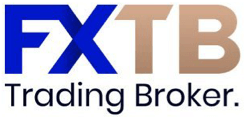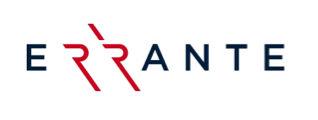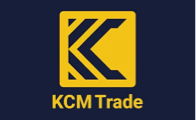OANDA is a long-standing forex and CFD broker in the Asia–Pacific region, recognized for combining rigorous regulation with proprietary execution technology and research-driven tooling. Founded in 1996, it has expanded into a multi-entity group serving retail and professional clients across Singapore, Malaysia, Thailand, Vietnam, Japan, and broader APAC. Its core value proposition for Asian traders rests on three pillars: regulatory credibility, robust platforms (including a proprietary suite, MetaTrader 4, TradingView connectivity in select regions, and a documented API), and transparent pricing models that adapt to different trading styles. In practice, that means stable operations during the Tokyo and Singapore sessions, clear disclosures on costs, and an ecosystem that scales from first demo trade to systematic deployment.

Between 60 to 80% of retail CFD accounts lose money.
| Regulators | ASIC FCA MAS IIROC CFTC NFA FFAJ BVI |
|---|---|
| Minimum Deposit | $0 |
| Leverage | Between 1:30 and 1:200 | Payment Methods | Visa Mastercard Bank Transfer Paypal |
OANDA is a long-established forex and CFD broker known for combining rigorous regulation, reliable execution, and research-driven tools. Founded in 1996, the firm has grown into a multi-entity group serving retail and professional traders across the Asia–Pacific region and beyond. Its appeal rests on three pillars: strong regulatory oversight, a platform stack that spans a proprietary suite, MetaTrader 4, TradingView connectivity in selected regions, and an official REST API; and transparent pricing frameworks that let clients choose between spread-only simplicity or core pricing with a fixed commission for tighter quotes.
For Asia-based traders, OANDA’s infrastructure is designed around active regional sessions, supporting low-latency access during Tokyo and Singapore hours and stable performance through the Asia–London overlap. Product coverage typically includes spot FX globally and CFDs on indices, commodities, metals, shares, and cryptocurrencies where permitted, with availability tailored to local rules. Operationally, client funds are segregated, disclosures are clear, and risk controls—such as stop loss and take profit—are integrated across platforms. Whether you are calibrating an EA on MT4, trading discretionary setups on chart-centric workflows, or automating entries via API, OANDA’s ecosystem aims to keep costs measurable, execution consistent, and portfolio management straightforward for the realities of modern trading in Asia.
Regulation
OANDA’s foundation as a global forex and CFD broker is built on nearly three decades of regulatory integrity, transparent disclosures, and client protection mechanisms. Established in 1996, the company has become one of the most trusted names in online trading by maintaining continuous compliance across multiple top-tier jurisdictions. For Asian traders, this regulatory backbone offers peace of mind in a market where cross-border supervision can vary widely between financial centers. OANDA’s commitment to clear governance, operational audits, and investor protection ensures that its clients—whether in Singapore, Japan, Malaysia, or Thailand—trade within a framework that meets strict international standards.
Each OANDA entity operates under the supervision of a recognized regulatory authority, ensuring that trading practices, fund management, and disclosure requirements adhere to local and global laws. This multi-layered oversight reinforces OANDA’s reputation for reliability and fairness, while also shaping its approach to transparency and client education. Below is an overview of the key regulatory bodies that oversee OANDA’s global operations:
- Monetary Authority of Singapore (MAS): Regulates OANDA Asia Pacific Pte Ltd, ensuring that Singapore-based traders operate under one of the most stringent financial frameworks in the region. MAS oversight mandates strict segregation of client funds, robust anti-money laundering controls, and transparent reporting.
- Australian Securities and Investments Commission (ASIC): Supervises OANDA Australia Pty Ltd, enforcing capital adequacy, audit transparency, and responsible conduct. This regulation covers a broad base of Asia-Pacific clients and provides a reliable structure for traders in neighboring countries.
- Financial Conduct Authority (FCA) – United Kingdom: Regulates OANDA Europe Markets Ltd and OANDA UK Ltd. The FCA is globally recognized for its rigorous investor protection standards, ensuring best execution, complaint handling, and financial resilience. Asian clients onboarding through this entity can benefit from the same safeguards applied to European traders.
- Japan Financial Services Agency (JFSA): Oversees OANDA Japan Co., Ltd. This regulation ensures strict adherence to Japan’s domestic trading laws, including capped leverage ratios, transparent order execution, and reporting standards designed to protect retail investors in one of the world’s most active forex markets.
- Commodity Futures Trading Commission (CFTC) & National Futures Association (NFA) – United States: Regulate OANDA Corporation, the firm’s U.S. entity. OANDA is a registered Futures Commission Merchant (FCM) and Retail Foreign Exchange Dealer (RFED) under the CFTC and a member of the NFA (ID: 0325821). These licenses ensure that OANDA operates with transparency, fair dealing, and regular examinations of capital, execution, and compliance procedures.
- Investment Industry Regulatory Organization of Canada (IIROC): Oversees OANDA (Canada) Corporation ULC, ensuring investor protection and operational transparency. IIROC’s framework enforces strong risk disclosures and compensation mechanisms for Canadian clients and serves as an example of regulatory discipline within OANDA’s global group.
Across all these entities, client funds are held in segregated accounts at reputable financial institutions, separate from company operating capital. This structure ensures that client assets remain protected even in the unlikely event of corporate insolvency. Additionally, OANDA’s U.S. entity is a member of the NFA and adheres to continuous monitoring and audits under the CFTC’s rules—reinforcing its commitment to full regulatory accountability.
While OANDA offers exposure to digital assets in selected jurisdictions, it clearly distinguishes this activity from its regulated forex operations. Digital asset trading is facilitated through Paxos Trust Company, an independent, regulated exchange. OANDA does not custody cryptocurrencies itself, ensuring that all digital asset holdings remain separate and externally managed. This clear separation protects clients and aligns with the broker’s overarching principle of transparency.
In summary, OANDA’s regulatory architecture stands as one of the most comprehensive in the global trading industry. With licenses across the United States, the United Kingdom, Japan, Singapore, Australia, and Canada, the firm upholds consistent standards of financial safety and operational integrity. For Asian traders, this means access to a trusted, well-capitalized broker that combines regional understanding with the security of world-class supervision. OANDA’s strict adherence to compliance and investor protection frameworks continues to make it a benchmark for reliability and ethical trading within the Asia–Pacific region.
Openning an account — Our Experience
For Asia-based traders, the account opening journey with OANDA is designed to be fast, fully digital, and sensitive to regional realities such as document formats, funding corridors, and time-zone support. In our test from Southeast Asia, the workflow began with automatic residency detection and assignment to the appropriate regional entity. This matters because leverage caps, product availability (for example, CFDs), and investor protections follow the supervising regulator tied to your location. The portal then guided us through a concise identity verification process and a short appropriateness assessment covering experience, objectives, and risk tolerance, which is standard for top-tier jurisdictions in the region.
The KYC step accepted common government IDs (passport or national ID) and recent proof of address (bank statement or utility bill). File upload was smooth on both mobile and desktop; the system validates file readability immediately, reducing back-and-forth. Approval in our case arrived within one business day. Asian clients should expect comparable timelines, though accuracy of personal details (full legal name, address formatting, and date formats) significantly affects the result. Once verified, the client area unlocked account creation in multiple base currencies—USD, SGD, JPY, among others—so you can align P&L reporting with your principal trading instruments and minimize conversion friction.
Funding felt region-aware. The cashier presented card rails, international bank transfers, and popular e-wallet methods commonly used across Asia. Cards and wallets typically credited the account rapidly in our test, while bank transfers followed the standard 1–3 business day cycle depending on the corridor. Fees were clearly labeled, with broker-side charges minimized and any third-party costs identified beforehand. The withdrawal flow mirrored deposits and required the usual verification checks; requests we submitted during Asia hours were processed promptly and with clear status updates inside the portal.
Platform activation was equally straightforward. From the same dashboard, we enabled access to the proprietary OANDA Trade suite (web/desktop/mobile), connected a MetaTrader 4 account for EA testing, and provisioned API credentials for a small, rules-based strategy. Credentials, server endpoints, and documentation links were consolidated in one place, which reduced setup time. For traders who operate at Tokyo or Singapore session opens, this matters: the less friction between approval and first execution, the easier it is to validate latency, slippage, and cost assumptions in live conditions.
What helped us accelerate approval and go live quickly:
- Exact personal data: Use your legal name and ensure address formatting matches your proof of address document to avoid resubmissions.
- Crisp documents: Upload color scans or high-quality photos (all corners visible) for both ID and address proof; check expiry dates.
- Entity awareness: Confirm which regional entity will supervise your account; this determines leverage, product scope, and protections.
- Base currency alignment: Choose SGD or JPY if those reduce conversions for your typical portfolio; add a USD sub-account for U.S.-quoted CFDs where permitted.
- Platform plan: Decide early whether you’ll use OANDA Trade, MT4, TradingView connectivity (where available), or the API; request all needed credentials at once.
For users who prefer to rehearse execution during Asian hours before funding, the demo path was frictionless and mirrored live market pricing closely, which let us trial order entry, risk parameters, and connectivity from an Asia-based VPS. Transitioning from demo to live required no extra paperwork—just funding and platform selection. Support during our setup responded within regional business hours and provided practical guidance on margin methodology, contract specifications for CFDs (where available), and corporate-action handling on shares and ETFs.
Overall, the onboarding felt purpose-built for Asia: quick verification, local-friendly funding, multiple base currency choices, and immediate access to a platform stack that spans discretionary and systematic workflows. For traders who value efficiency and regulatory clarity, this makes the path from application to first trade both predictable and operationally clean.
Account Types
OANDA’s official Singapore account comparison outlines a tiered program that starts with Standard and scales to Premium and Premium Plus. The tiers are defined by clear eligibility criteria (initial deposit for new clients and/or notional trading volume within a rolling three-month window) and unlock progressively better pricing, tools, and service.
| Criteria / Features | Standard | Premium | Premium Plus |
|---|---|---|---|
| Tier eligibility | Default entry tier | Meets tier criteria (see below) | Meets tier criteria (see below) |
| Eligibility – Notional trade volume (within 3 months) | — | > US$30 million | > US$200 million |
| Eligibility – Initial deposit (new clients only) | — | Initial deposit option available (tier entry alternative) | Initial deposit option available (tier entry alternative) |
| Pricing mode | Spreads only | Spreads only or Core pricing | Spreads only or Core pricing |
| Core pricing – prorated commission | — | ≈ US$50 / million | ≈ US$40 / million |
| Discounted financing | — | Available | Available (additional admin-fee reduction shown) |
| Bank wire fee reimbursement | — | Available | Available |
| Volume-based rebates* | — | ≈ US$4 / million | ≈ US$6 / million |
| Referral programme | Included | Included (bonus indicated) | Included (bonus indicated) |
| Trading tools – AutoChartist | Included | Included | Included |
| MT4 premium upgrade | Included | Included | Included |
| API access | Included | Included | Included |
| Virtual Private Server (VPS) | — | Available | Available |
| OANDA Orderbook – data refresh | Every 20 minutes (selected markets) | Every 5 minutes (all markets) | Every 5 minutes (all markets) |
| Premium trading content | — | Included | Included |
| Subsidised subscriptions | — | Included | Included |
| Support – 24/5 phone, live chat, email | Included | Included | Included |
| Dedicated account / relationship manager | — | Included | Included |
| Priority service queue | — | Included | Included |
| 1-to-1 access to market analysts | — | Included | Included |
| Webinars – monthly series | Included | Included | Included |
| Exclusive premium webinars / client events | — | Included | Included |
| Platforms | OANDA Web / Mobile, MT4, TradingView (where available) | Same as Standard | Same as Standard |
| Multiple sub-accounts (different currencies) | Included | Included | Included |
| Ability to hedge | Included | Included | Included |
| Margin relief | Included | Included | Included |
| GSLO (Guaranteed Stop-Loss Orders) | Shown as available in table (entity-dependent) | Shown as available in table (entity-dependent) | Shown as available in table (entity-dependent) |
*Notes: The table displays volume-based rebates at ≈US$4/million (Premium) and ≈US$6/million (Premium Plus), and core-pricing commissions at ≈US$50/million (Premium) and ≈US$40/million (Premium Plus). Exact eligibility via initial deposit for new clients is indicated on the official comparison; the notional-volume thresholds are shown as >US$30m (Premium) and >US$200m (Premium Plus) within three months. Availability of specific features (e.g., GSLO, TradingView connectivity) remains entity-dependent and can vary by residency and regulation.
In practice, this tiering lets Asia-based traders start on Standard and graduate to Premium or Premium Plus as their flow scales. Premium tiers materially improve “all-in” economics through lower core-pricing commissions, volume rebates, discounted financing, and bank-wire reimbursements, while also adding VPS options, faster Orderbook refresh, premium content, and dedicated service. If you trade actively during Tokyo/Singapore sessions or run automated strategies, the Premium ladders can meaningfully reduce round-trip costs and upgrade tooling without changing platforms or account numbers.
Assets
OANDA’s catalog focuses on spot FX globally and CFDs—indices, commodities, metals, shares, and cryptocurrencies—where local rules permit. Product availability, leverage, and margin treatment depend on the supervising entity, but the overarching aim is consistent: provide Asia-based traders with a unified account that can express currency views, equity index exposures, and macro hedges from a single operational stack. During Tokyo hours, depth in JPY pairs tends to be strongest; as Singapore and Hong Kong volumes build, regional indices and SGD crosses often become more active; through the Asia–London overlap, global majors and metals typically tighten.
Available Assets
Below you can see which assets are available for trading with Oanda:
| Asset | Availability |
|---|---|
| Currencies | 43 |
| Real Stocks | ✗ |
| Stock CFDs | ✓ |
| Commodities | ✓ |
| Indices | ✓ |
| Real ETFs | ✗ |
| ETFs CFDs | ✓ |
| Futures | ✗ |
| Options | ✗ |
| Bonds | ✓ |
| Cryptocurrency CFDs | ✓ |
| Real Cryptocurrencies | ✗ |
*Availability of certain assets may vary based on account type, platform, or region.
OANDA’s asset offering provides Asia-based traders with one of the most complete and balanced selections in the retail trading industry. Built on a foundation of institutional-grade infrastructure, its catalog spans forex, indices, commodities, metals, bonds, and share CFDs (where permitted by regulation). This multi-asset structure is particularly valuable for Asian traders operating across diverse economies, from Singapore’s financial hub to Japan’s export-driven markets and the commodity-sensitive regions of Southeast Asia. By giving access to both local and international instruments under a single account, OANDA enables clients to construct globally diversified portfolios while maintaining regionally optimized execution. The result is a trading environment that supports tactical strategies during regional sessions and strategic diversification across multiple asset classes.
Forex remains OANDA’s most liquid and widely traded product category, reflecting the broker’s long heritage in currency markets. Traders can access a broad range of pairs — majors like EUR/USD and USD/JPY, minors such as AUD/JPY and GBP/CHF, and selected exotics including USD/SGD and USD/CNH. For Asia-Pacific participants, this coverage aligns naturally with the market’s rhythm. Liquidity in USD/JPY and JPY crosses peaks during Tokyo hours, while pairs involving SGD, AUD, and NZD show robust depth throughout the Asia–London overlap. OANDA’s execution model — direct market access without a dealing desk — allows orders to be filled transparently with symmetrical slippage, a critical advantage for algorithmic and scalping systems that depend on stable latency. Combined with real-time quote aggregation from Tier-1 banks and liquidity providers, this structure ensures tight pricing and consistency even through fast-moving events such as central bank decisions or macroeconomic data releases.
For Asian traders, the true advantage of OANDA’s asset catalog lies not only in its range but in its structural coherence. Each instrument type shares the same execution logic, risk controls, and reporting transparency — reducing operational complexity for multi-asset portfolios. Whether you are a Tokyo-based algorithmic trader specializing in JPY crosses, a Singapore investor hedging positions with commodities, or a Malaysian trader exploring index and crypto CFDs, OANDA’s product suite delivers flexibility without fragmentation. Its balance between breadth, liquidity, and regulatory compliance reflects a deep understanding of the region’s trading behaviors, making OANDA a reliable partner for navigating the interconnected global markets that shape Asia’s financial future.
Spreads
Pricing at OANDA is structured to accommodate both simplicity and precision. The spread-only model is straightforward and easier to reconcile on statements; the core-pricing + commission model reduces the quoted spread and adds a transparent per-side commission, typically yielding a lower all-in cost for higher-turnover strategies. In Asia, the most competitive conditions generally align with regional liquidity cycles: the Tokyo open, the build-up into Singapore/Hong Kong activity, and the Asia–London overlap. Traders operating during these windows can expect tighter spreads on majors, while thin periods or event risk can widen quotes across FX, indices, and metals.
Spreads Offered
Below a visual representation of Oanda's spreads across several currency pairs:
*Spreads are variable and may change based on market conditions, account types and trading volumes.
OANDA’s spread framework is built to give Asia-based traders clear choices between simplicity and precision. The broker typically offers two pricing models: a spread-only structure that embeds trading costs directly into the bid–ask, and a core-pricing configuration that narrows the displayed spread and adds a fixed commission per side. For newer or lower-frequency traders in Singapore, Malaysia, Thailand, and the wider region, spread-only pricing keeps reconciliation straightforward — one all-in number to track on each ticket. For scalpers, algorithmic users, and high-turnover strategies active during Tokyo and the Asia–London overlap, core pricing often reduces the round-trip cost once the commission is factored in. In both cases, spreads are variable and reflect live liquidity; the tighter your trading window’s depth, the tighter your typical quoted spread.
Understanding how session microstructure shapes spreads is critical in Asia. Liquidity usually concentrates at the Tokyo open and builds again as Singapore and Hong Kong activity comes online, before compressing further when London joins. Majors like USD/JPY and EUR/USD tend to quote most competitively in these windows. By contrast, some regional or event-sensitive pairs can widen temporarily around macro releases from Japan, China, or key ASEAN economies. The same principle applies beyond FX: equity index CFDs such as Nikkei 225 or Hang Seng often show their best spreads when the underlying cash markets are live, while metals like XAU/USD can tighten around the Asia–London overlap and widen briefly around high-impact data or policy headlines.
From a cost-engineering perspective, the decision between spread-only and core pricing should be driven by your strategy’s statistics, not headline minimums. Measure your realized “all-in” cost across a representative sample: average spread paid, plus commission if on core pricing, plus any slippage during entries and exits. Traders running EA-based scalps on USD/JPY during Tokyo hours frequently find that core pricing lowers the median round-trip, whereas swing traders holding positions for days may see negligible difference and prefer the simplicity of spread-only. Also consider base currency: if your account is in SGD or JPY and you primarily trade USD-quoted instruments, conversions can add tiny frictions that matter over many tickets; aligning base currency with your main instruments helps keep the effective spread closer to what you model.
In practice, OANDA’s goal is spread stability more than occasional ultra-low prints. Asian traders benefit most when the average spread during their active window is predictable and execution aligns closely with quotes. Best practice is to log your trades by time bucket — Tokyo open, Asia midday, Asia–London overlap — and regularly compare modeled vs. realized costs. Combine this with sensible event risk controls (reduced size or temporary no-trade rules during major data) and, for automation, low-latency connectivity where possible. With a deliberate approach to pricing selection and session timing, OANDA’s spread architecture can support both cost-efficient intraday tactics and steady, longer-horizon strategies across the Asia–Pacific landscape.
Other Trading Costs
Beyond spreads and commissions, understanding other trading costs is essential for achieving accurate performance analysis — particularly for Asia-based traders who manage positions across multiple sessions and asset classes. While OANDA is recognized for its transparent cost structure, every trading environment includes secondary expenses that can affect overall profitability. These costs, though often smaller than spreads, accumulate over time and should be part of every trader’s long-term strategy assessment. By keeping non-trading fees low and disclosing all potential charges upfront, OANDA ensures that traders in Singapore, Malaysia, Japan, and other Asian markets can plan their operations with clarity and financial discipline.
Before evaluating the total cost of trading, it’s helpful to categorize these additional charges. Some arise from market mechanics — such as overnight financing — while others relate to currency conversion, funding methods, or infrastructure choices for automation. The following list outlines the key non-trading and incidental costs you should consider when operating with OANDA, especially if you hold overnight positions or run cross-currency portfolios:
- Overnight Financing (Swaps): Positions held past the market rollover are subject to a credit or debit based on the interest rate differential of each instrument. Swap-free (Islamic) configurations are available for traders in Indonesia, Malaysia, and other Muslim-majority regions.
- Currency Conversion Fees: If your account base currency differs from the traded pair — for example, using SGD or JPY while trading USD instruments — a small conversion fee applies when settling profits or losses. Choosing a base currency aligned with your main trading instruments minimizes this cost.
- Deposit and Withdrawal Charges: OANDA itself does not typically charge for deposits or withdrawals, but regional banks, card issuers, or e-wallet providers may impose corridor-specific fees depending on payment method and jurisdiction.
- Inactivity Fees: Under most entities, OANDA may charge a modest monthly inactivity fee after a defined period of no trading activity. This encourages account maintenance while preventing dormant balance accumulation.
- VPS or Connectivity Costs: Traders running Expert Advisors or low-latency systems can use optional VPS hosting near Tokyo or Singapore. These are external services, meaning fees are paid to the provider rather than OANDA itself.
- Slippage and Market Impact: While not a fee, slippage can influence execution cost during fast markets. OANDA’s no-dealing-desk structure allows both positive and negative slippage depending on liquidity depth.
Understanding and managing these expenses is a hallmark of professional trading. Asian traders — particularly those active in multiple time zones — should regularly monitor their financing debits and conversion activity, as these can fluctuate with market interest rates and volatility. Swap calculations are updated daily within the trading platforms, making it easy to anticipate overnight costs before carrying a position forward. Likewise, being mindful of local banking holidays and settlement schedules helps avoid avoidable transfer delays or conversion inefficiencies when moving funds between base currencies like SGD, USD, or JPY.
Ultimately, OANDA’s approach to other trading costs is characterized by predictability and transparency. All fees are clearly published in advance, and the broker’s margin and financing policies are accessible directly within the platform interface. For Asia-based clients who value consistency and control, this cost structure supports sustainable strategy design — ensuring that profits result from market insight rather than from unpredictable operational frictions. By keeping secondary costs minimal and clearly defined, OANDA allows traders to focus on execution quality, portfolio management, and long-term performance in the world’s most dynamic financial region.
Trading Conditions
OANDA’s trading conditions are engineered to meet the needs of Asia’s fast-moving financial landscape, where execution precision, speed, and reliability define long-term success. The broker’s infrastructure and pricing systems are optimized for traders operating during Tokyo, Singapore, and Hong Kong sessions, as well as for those bridging into the Asia–London overlap. By combining a pure execution-only model with direct market access, OANDA minimizes dealing-desk interference and ensures that every order is transmitted to top-tier liquidity providers under transparent market conditions. This framework allows traders across the region to operate with confidence, whether executing manual strategies, running Expert Advisors, or deploying algorithmic systems sensitive to latency and depth of market.
At its core, OANDA’s trading environment emphasizes flexibility and consistency. All platforms—OANDA Trade, MetaTrader 4, and TradingView (where supported)—share synchronized pricing feeds and execution logic, enabling a seamless transition between devices and strategies. Traders can apply hedging, scalping, and automated trading techniques freely, with each platform supporting multiple order types and advanced risk tools. The broker also adapts its leverage and margin parameters to comply with each region’s regulatory standards, ensuring that retail clients enjoy protection while professional traders can access higher limits where permitted. This alignment between operational freedom and compliance has made OANDA a benchmark for reliability among Asia-based traders.
To understand OANDA’s trading framework more deeply, consider the following key elements that define its performance and transparency model:
- Execution Model: Straight-through processing (STP) with no dealing desk ensures that trades are routed directly to liquidity providers without manual intervention or price manipulation.
- Latency: Regional data centers located in Tokyo and Singapore maintain average execution speeds below 30 milliseconds, ideal for high-frequency and algorithmic trading systems.
- Leverage: Varies by regulatory entity; retail caps under MAS or ASIC entities generally reach up to 1:30, while professional accounts or other jurisdictions may access up to 1:200 or more, subject to eligibility.
- Order Types: Supports market, limit, stop, trailing stop, and OCO (one-cancels-the-other) orders across all platforms, facilitating dynamic strategy execution.
- Hedging and Scalping: Fully permitted, providing traders with professional-grade flexibility for intraday and multi-session strategies common in Asia.
- Risk Management Tools: Stop loss, take profit, and guaranteed stop-loss orders (where supported) help control exposure during volatile events.
- Negative Balance Protection: Applied to retail clients under regulated entities, ensuring that losses cannot exceed deposits during extreme market conditions.
- Islamic Accounts: Swap-free configurations available for Muslim traders in Indonesia, Malaysia, and other eligible regions.
- Automation and VPS: Dedicated server options and low-latency connectivity for algorithmic and EA-based traders operating during Tokyo and Singapore sessions.
OANDA’s operational transparency also extends to its reporting and trade execution statistics, which are regularly audited and disclosed under applicable regulations. Traders can review trade confirmations, margin usage, and swap details directly within the platform, maintaining full control over their exposure in real time. This level of visibility is especially important in Asia, where multi-session trading and cross-asset strategies demand precision in both timing and cost control. Additionally, OANDA’s infrastructure minimizes slippage variance and supports symmetrical fills, helping algorithmic and discretionary traders achieve consistent order execution across volatile sessions.
In summary, OANDA’s trading conditions combine technology, regulatory rigor, and execution reliability to create a balanced environment for both institutional and retail participants. Whether you are a Singapore-based trader managing regional currency pairs, a Japanese professional scalping USD/JPY, or a Malaysian investor running automated systems overnight, the broker’s consistent spreads, rapid execution, and clear risk parameters provide the operational certainty needed to succeed in competitive Asian markets. OANDA’s ability to merge compliance with flexibility continues to make it one of the most respected trading environments in the Asia–Pacific region.
Is OANDA a good option for Asian traders?
Evaluating OANDA’s value for Asian traders requires considering both its technological strengths and its ability to adapt to local market structures. Across Asia–Pacific, traders operate in one of the most diverse financial environments in the world — with participants ranging from highly regulated hubs like Singapore and Japan to rapidly expanding markets such as Indonesia, Vietnam, and Malaysia. OANDA’s long presence in the region, combined with its MAS and ASIC regulation, gives it an advantage in trust and operational reliability. The broker’s infrastructure, particularly its Tokyo and Singapore data centers, delivers the low latency required for strategies dependent on precise execution, while its transparency in pricing and cost structure appeals to the risk-conscious mindset common among professional traders in Asia.
Another factor that makes OANDA attractive in Asia is its adaptability to different trading styles and technical preferences. The broker supports multiple platforms — OANDA Trade, MetaTrader 4, and TradingView (where available) — allowing both discretionary and algorithmic traders to work within familiar environments. Local traders appreciate the ability to integrate automated systems through MT4 or API solutions, while those who prefer visual and chart-driven workflows can rely on OANDA’s proprietary platform or TradingView connectivity. The consistency of spreads, combined with real-time liquidity sourced from institutional providers, ensures that performance remains stable across peak Asian sessions. Whether executing short-term scalps on USD/JPY or managing multi-asset positions across forex, indices, and commodities, traders can depend on OANDA’s infrastructure for precision and reliability.
In terms of accessibility, OANDA stands out for its regional funding methods and account flexibility. The broker supports base currencies such as SGD, JPY, USD, and AUD, reducing conversion costs for clients trading cross-border instruments. Funding and withdrawal processes typically include credit and debit cards, international bank transfers, and widely used e-wallets, with most corridors optimized for fast settlements across Southeast Asia. For Muslim-majority countries such as Indonesia and Malaysia, OANDA also offers swap-free accounts that comply with Sharia financial principles — a feature that broadens the broker’s inclusivity and reinforces its regional relevance. Combined with responsive customer service operating within Asian time zones, this accessibility strengthens OANDA’s position as a practical and dependable option for regional traders.
Overall, OANDA’s strengths align closely with the priorities of Asia’s trading community: regulatory reliability, transparent cost structures, robust technology, and platform flexibility. Its focus on execution quality and data-driven transparency helps build long-term trust, while its infrastructure ensures performance during critical regional sessions. While some traders may wish for an even broader range of local equities or ETF CFDs, the current multi-asset suite already covers most strategic needs. For those seeking a broker that blends global credibility with a deep understanding of Asia’s trading rhythms, OANDA stands out as a solid and forward-looking choice in 2025 and beyond.
Our Verdict
After extensive evaluation, OANDA proves to be one of the most balanced and trustworthy brokers for traders across the Asia–Pacific region. Its long-standing reputation, built over nearly three decades, rests on the combination of strict regulatory oversight, transparent pricing, and reliable execution technology. For Asian clients who value stability and consistency above marketing promises, OANDA provides an institutional-grade environment without unnecessary complexity. From the structure of its spreads to its clearly defined overnight financing rates, every component of the trading experience is engineered for clarity and fairness. This approach makes it especially appealing to traders in Singapore, Japan, Malaysia, and Hong Kong — financial centers that prize compliance and operational integrity.
In performance terms, OANDA maintains competitive execution speeds through its Tokyo and Singapore data centers, delivering low-latency access to liquidity even during volatile periods. The broker’s flexibility across platforms — including OANDA Trade, MetaTrader 4, and TradingView — gives traders freedom to choose their preferred workflow without compromising reliability. Cost structures are predictable, account types are clearly defined, and risk controls such as negative balance protection and stop-loss mechanisms are applied consistently across entities. Combined with multilingual support and regional funding options, OANDA demonstrates a clear commitment to serving Asia’s diverse and demanding trading community.
However, OANDA’s conservative stance also means that certain high-risk features, such as extreme leverage or exotic asset exposure, are intentionally limited under most regulated entities. This may deter traders seeking speculative amplification, but for the majority of serious participants, this restraint translates to security and regulatory alignment. In practice, it encourages disciplined risk management and a more sustainable trading experience — something increasingly valued among Asia’s maturing retail trader base. OANDA’s adherence to regulatory best practices in MAS, ASIC, JFSA, and other top-tier jurisdictions sets it apart as a firm focused on longevity rather than short-term growth.
Ultimately, OANDA stands as a benchmark for professionalism and transparency in Asia’s evolving trading ecosystem. Its technology, cost structure, and regulatory integrity combine to create an environment suited for traders who prioritize precision, reliability, and ethical standards. Whether you are a Singapore-based algorithmic trader, a Malaysian swing trader, or a Japanese investor seeking regulated exposure to global markets, OANDA delivers a comprehensive and consistent experience. In a region where reliability is often the defining factor between success and frustration, OANDA remains one of the most credible and forward-looking brokers for 2025 and beyond.
Frequently Asked Questions
Is OANDA regulated for Asian clients?
Yes. OANDA operates multiple regulated entities worldwide. Your account is onboarded to the division that corresponds to your country of residence, which determines leverage limits, product availability, and investor protections aligned with local rules.
Which platforms does OANDA offer?
OANDA provides its proprietary OANDA Trade (fxTrade) platform for web, desktop, and mobile, supports MetaTrader 4 for EA-driven workflows, and offers TradingView connectivity in selected regions. An official REST API is available for systematic and fintech use cases.
What products can I trade in Asia?
Spot FX is available globally. CFDs on indices, commodities, metals, shares, and cryptocurrencies are offered where permitted by local regulations. Specific product lists can vary by entity, so availability depends on your residency.
How does OANDA’s pricing work?
There are typically two pricing models: spread-only for simplicity, and core pricing plus a commission for tighter displayed spreads. Active or algorithmic traders often prefer the latter; lower-frequency traders may favor the spread-only structure.
What leverage can I access?
Leverage is set by the regulator supervising your account. Retail caps are stricter under top-tier regulators, while other entities may allow higher limits subject to eligibility and risk disclosures.
Does OANDA allow hedging, scalping, and algorithmic trading?
Yes. Hedging and scalping are permitted, and algorithmic trading is supported through MT4 EAs, the proprietary platform’s features, and the REST API for programmatic strategies.
How tight are OANDA’s spreads during Asian hours?
Spreads are variable and reflect live liquidity. Majors such as USD/JPY typically tighten during the Tokyo open and the Asia–London overlap. Core pricing accounts can further reduce quoted spreads at the cost of a fixed commission.
Are swap-free (Islamic) accounts available?
Swap-free configurations may be available under specific entities and on eligible instruments. They replace overnight interest with transparent administrative adjustments where applicable.
What are the other trading costs I should consider?
Beyond spreads and commissions, consider overnight financing on positions held past rollover, possible currency conversion if your account base differs from the instrument’s currency, and any third-party fees from banks or e-wallets. Optional VPS or colocation for automation can also add costs.
How fast is account opening and funding for Asian clients?
The onboarding process is fully digital. After identity verification and appropriateness checks, approvals are typically completed within a short timeframe. Funding methods generally include cards, bank transfers, and popular regional e-wallets; actual processing times depend on the corridor.
Where are execution servers located for APAC?
Infrastructure is aligned with active Asia sessions to keep latency low during Tokyo and Singapore hours. Exact server topology can evolve, but the design prioritizes stable execution for the region.
Does OANDA segregate client funds?
Yes. Client money is held in segregated accounts and kept separate from the firm’s operational capital, in line with the requirements of the supervising regulator.
Are there inactivity fees?
OANDA’s policy on inactivity fees depends on the entity. The firm aims for transparent, clearly disclosed terms; check the conditions that apply to your specific division.
Can I use base currencies like SGD or JPY?
Multiple base currencies are supported, and availability can differ by entity. Choosing a base currency aligned with your primary instruments (e.g., SGD or JPY) can reduce conversion frictions in day-to-day trading.
How are corporate actions handled on share and ETF CFDs?
Corporate actions such as dividends and splits are reflected via cash adjustments according to CFD conventions. Contract specifications outline the mechanics so you can reconcile P&L around event dates.
Is there a demo account?
Yes. Demo environments mirror live pricing so you can test execution, risk settings, and platform workflows during Asian market hours before committing real capital.
What support is available for Asian traders?
Support coverage spans regional trading hours with multilingual assistance in selected markets. Channels typically include live chat, email, and knowledge-base articles for platform and account queries.
Note: Any opinions expressed in this article are not to be considered investment advice and are solely those of the authors. Singapore Forex Club is not responsible for any financial decisions based on this article's contents. Readers may use this data for information and educational purposes only.







